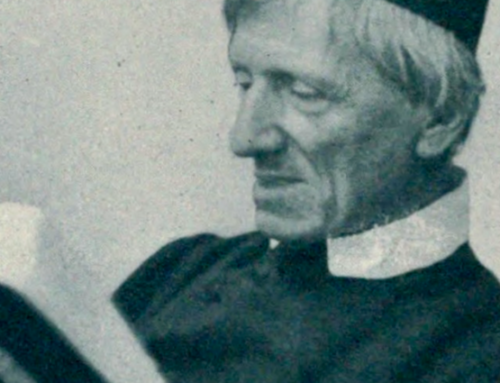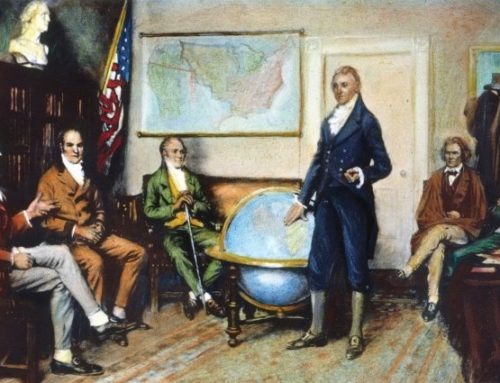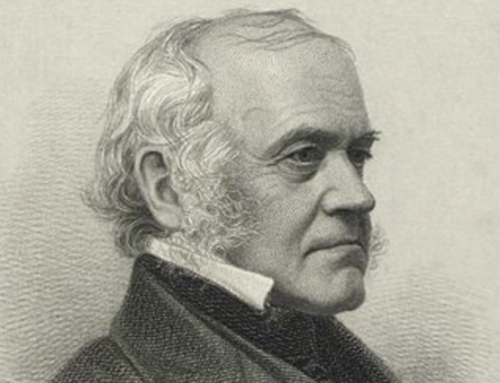The English Romantic poets sought truth beyond the empirical and scientistic limits to which it had been confined by eighteenth-century rationalism. Insisting that truth could be found in transcendence, and especially in the transfiguring kiss of Beauty, these poets waxed lyrical in their praise of Creation, seeing it as a hymn of praise to the Creator Himself.
 One of the best things produced by the so-called “Enlightenment” and the superciliously self-named “Age of Reason” was the very healthy reaction against it. The English Romantic poets, Blake, Wordsworth and Coleridge, sought truth beyond the empirical and scientistic limits to which it had been confined by eighteenth-century rationalism. Insisting that truth could be found in transcendence, and especially in the transfiguring kiss of Beauty, these three poets waxed lyrical in their praise of Creation, seeing it as a hymn of praise to the Creator Himself.
One of the best things produced by the so-called “Enlightenment” and the superciliously self-named “Age of Reason” was the very healthy reaction against it. The English Romantic poets, Blake, Wordsworth and Coleridge, sought truth beyond the empirical and scientistic limits to which it had been confined by eighteenth-century rationalism. Insisting that truth could be found in transcendence, and especially in the transfiguring kiss of Beauty, these three poets waxed lyrical in their praise of Creation, seeing it as a hymn of praise to the Creator Himself.
English Romanticism would also manifest itself in a revival of interest in the Middle Ages, giving birth to various forms of neo-medievalism. There was the Gothic Revival, led by Augustus Pugin, the most famous architectural fruit of which are the Houses of Parliament; there was the Oxford Movement within the Anglican Church, which gave birth to what became known as “Anglo-Catholicism” and led to the conversion to Roman Catholicism of John Henry Newman. Last but not least was the Pre-Raphaelite Brotherhood in the visual arts, which sought a purer vision of art to be found “pre-Raphael” in the Middle Ages and the Early Renaissance.
The fertile neo-medievalist interaction between Romantic poetry and Pre-Raphaelite art can be found in a poem by Keats, which inspired several great paintings.
Keats’ “La Belle Dame Sans Merci” takes us back to the Middle Ages but also into the realm of faërie. It begins with the narrator addressing a knight in shining armour:
O what can ail thee, knight-at-arms,
Alone and palely loitering?
The sedge has withered from the lake,
And no birds sing.
The imagery is late autumnal, the season of death and dying, and is reminiscent of the prevailing imagery of Keats’ well-known poem, “Autumn”. The withering sedge matches the pale and sickly demeanor of the knight:
I see a lily on thy brow,
With anguish moist and fever-dew,
And on thy cheeks a fading rose
Fast withereth too.
The reason for the loitering and lonely knight’s pale complexion and feverish brow is explained in the remainder of the poem in which the knight tells of the curse that has befallen him. He had met a beautiful “faery’s child”, an elven lady with flowing hair and a lightness of foot, whose wild eyes looked at him “as she did love”.
I set her on my pacing steed,
And nothing else saw all day long,
For sidelong would she bend, and sing
A faery’s song.
She found me roots of relish sweet,
And honey wild, and manna-dew,
And sure in language strange she said—
‘I love thee true’.
The beautiful faëry child leads him to her elven grotto: “And there I shut her wild wild eyes / With kisses four.”
After the elven enchantress had lulled him to sleep, the knight is visited in a dream by those who had been similarly seduced and enchanted:
I saw pale kings and princes too,
Pale warriors, death-pale were they all;
They cried—‘La Belle Dame sans Merci
Thee hath in thrall!’
He awakes from the dream on the cold hill side. The lady is nowhere to be seen, presumably gone forever, leaving him with an insatiable hunger for a love and beauty never to be recovered:
And this is why I sojourn here,
Alone and palely loitering,
Though the sedge is withered from the lake,
And no birds sing.
The sense of melancholy, prevalent throughout this wonderful poem, is accentuated by the way in which the poet ends each stanza with a shorter line than the lines which precede it. This has the effect of ending each verse with a trochaic downcasting of the spirit as opposed to an iambic uplifting of it. Such prosodic dexterity induces a prophetic sadness in the reader which serves as a doom-laden premonition of the impending desolation.
Keats’ poem, so evocative of the neo-medievalist spirit, awash with elven magic and Arthurian romance, inspired some of the finest art of the past two centuries, as well as a sublime musical setting by Charles Villiers Stanford. The most famous of all the paintings is probably Frank Bernard Dicksee’s depiction of the “faery child” mounted on the “pacing steed” upon which the knight had set her, bending sidelong and singing her elven song. The same scene from the poem inspired an earlier painting by Walter Crane, which is less successful because it lacks the ethereal sense of mystique and magic that Dicksee’s better known painting evokes.
John William Waterhouse shows the elven maid seated on the ground, drawing the knight towards her for the fateful kiss. Henry Meynell Rheam shows her standing in seductive triumph over the sleeping knight, now forever in her thrall, with the ghosts of her former enthralled paramours in the background. Finally, Frank Cadogan Cowper shows the “faery child” as a femme fatale, seated in a flaming, flowing dress, enthroned in sadistic triumph over the sleeping figure of her enamoured and enarmoured victim.
These wonderful illustrations of an equally wonderful poem exhibit the creative catalytic role that literature plays in firing the imagination of artists. The results, as we have seen, can be breathtaking examples of words made flesh.
The Imaginative Conservative applies the principle of appreciation to the discussion of culture and politics—we approach dialogue with magnanimity rather than with mere civility. Will you help us remain a refreshing oasis in the increasingly contentious arena of modern discourse? Please consider donating now.
The featured image is “La Belle Dame Sans Merci” (1893), by John William Waterhouse, and is in the public domain, courtesy of Wikimedia Commons. It has been brightened for clarity.







It is a very good article i ignored that the Arthurian Renassaince in the 19th century started with Keats i think that we Will go to Tennyson or William Morris. It is evocative although we much some Credit to the German writers i think in Brentano, Gorres, Stoldberg, Schlegel, Eichendorff and not catholic but very close to the Catholic religión Novalis, la Motte Foulque, Ludwig Tieck and E.T.A. Hofmann.
I am desiring to read your New book the faith of our fathers a catholic history of England and also your book about Benedict XVI, but especially the faith of our fathers, because i am historian and because i am more interested in the catholic english People. Sandra Miesel said to me something about Carlos Eire. With all please would you mind trying to get a spanish publishing i would give everything for reading your New books.